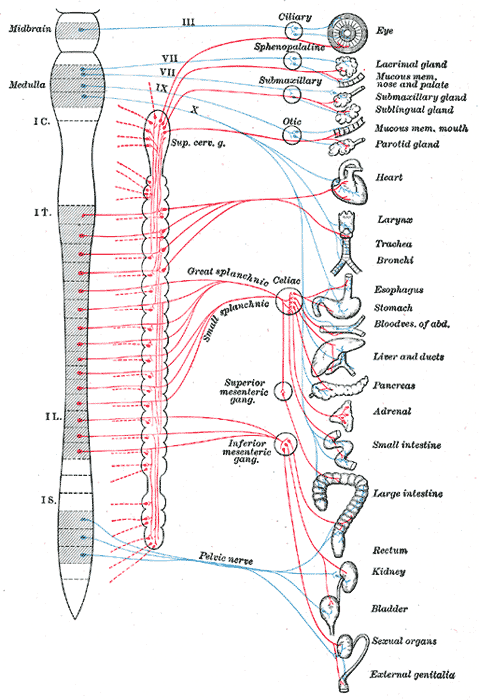Sympathetic nervous system: Difference between revisions
Jump to navigation
Jump to search

imported>Robert Badgett No edit summary |
imported>David E. Volk m (subpages) |
||
| Line 1: | Line 1: | ||
{{subpages}} | |||
The '''sympathetic nervous system''' is part of the [[autonomic nervous system]] has the following functions: | The '''sympathetic nervous system''' is part of the [[autonomic nervous system]] has the following functions: | ||
[[Image:Gray839.gif|thumb|479px|The autonomic nervous system<br/>Blue = parasympathetic<BR>'''Red = sympathetic''']] | [[Image:Gray839.gif|thumb|479px|The autonomic nervous system<br/>Blue = parasympathetic<BR>'''Red = sympathetic''']] | ||
Revision as of 09:47, 23 January 2008
The sympathetic nervous system is part of the autonomic nervous system has the following functions:
- Diverts blood flow away from the gastro-intestinal (GI) tract and skin via vasoconstriction.
- Blood flow to skeletal muscles, the lung is not only maintained, but enhanced (by as much as 1200%, in the case of skeletal muscles).
- Dilates bronchioles of the lung, which allows for greater alveolar oxygen exchange.
- Increases heart rate and the contractility of cardiac cells (myocytes), thereby providing a mechanism for the enhanced blood flow to skeletal muscles.
- Dilates pupils and relaxes the lens, allowing more light to enter the eye.
